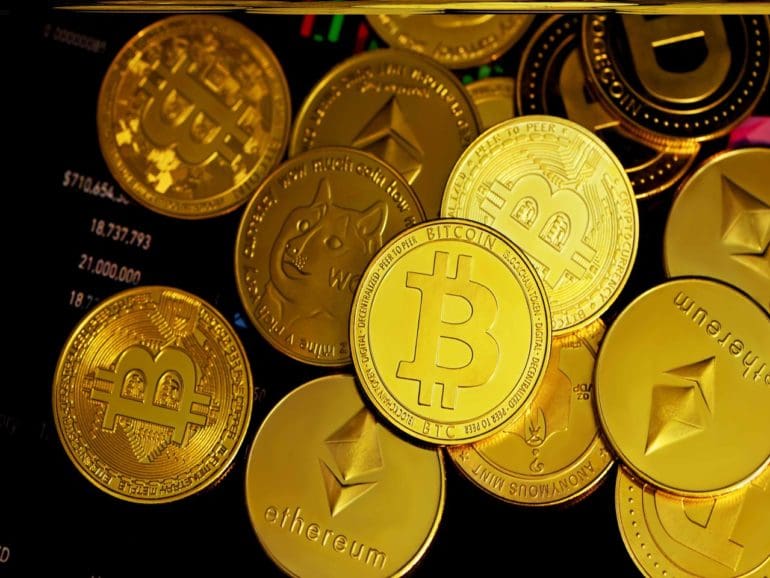The “crypto winter” has swept away the hopes of many investors worldwide. But in many of Latin America’s inflation hotspots, stablecoins are still finding adopters.
Despite its massive price drop, the ecosystem is building bridges into Latin America’s real-world economy at a rate hardly seen in developed economies.
To be sure, a lower price and the collapse of FTX were two dramatic blows to the industry. Most companies have been forced to downsize dramatically. This includes Latin American crypto startups with impressive growth in recent years.
But for Latin Americans, cryptocurrencies often retain their appeal beyond speculation. They sort out some of the inefficiencies. They can be used as a vehicle for cross-border transactions, a hedge against inflation, and an alternative to weak fiat currencies.
Last week, a crackdown on stablecoins in the U.S. rippled through markets as regulators brought the hammer down on digital assets. The Securities and Exchange Commission told Paxos, the firm behind Binance’s stablecoin, that it should have registered the product as a security. Also, that is considering acting against the platform, Reuters reported.
Stablecoins growing fast
In Latin America, stablecoins are increasing fast. Its applications range from remittances to day-to-day transactions. Most sought-out assets are linked to the US dollar, yet the offer is expanding.
Earlier this year, Mexico’s crypto firm Bitso announced it incorporated Euro Coin (EUROC) into its offerings. A stablecoin based on the European currency, the company said it was the first in Latin America to do so.
The decision comes as the business case for stablecoins magnifies. With high volatility in bitcoin and ether, Latin Americans have turned to digital assets stripped of that inherent risk instead.
Essentially, stablecoins are digital assets that aim to have a stable price backed by reserves. They are generally denominated in a monetary unit of account, such as the dollar.
They are an alternative for cross-border transactions in a region with hefty international transfer fees. Latin Americans are increasingly turning to cryptocurrencies to make remittance payments, data from research firm Chainalysis shows.
While it has fallen in other regions, the firm concluded that adoption during the crypto winter has continued to grow in Latin America.
‘High interest’ from Latin Americans
In a recent paper, the International Monetary Fund underscored the region’s “high interest” in crypto assets and stablecoins. “These technologies could help overcome Latin America’s still relatively low levels of financial inclusion and help reduce the cost of cross-border transactions like remittances,” the report noted.
In a study entitled “New Payments Index 2022,” Mastercard reported that 51% of consumers in the region have already transacted with cryptoassets. Also, more than a third have paid for an everyday purchase with stablecoin. This last number compares to 11% at a global level.
“Although cryptocurrencies with some volatility, such as bitcoin or ethereum, are currently in a period of setback, the (Latam) crypto ecosystem has been growing at an impressive rate,” says Marcelo Cavazzoli, CEO and Co-Founder at Lemon.
The Argentine crypto company has had a noticeable shift toward stablecoins during that time. The firm reports 1.8 million clients and over 800,000 debit cards through which users can pay for goods and services using crypto.
A ‘serious threat’ to fiat currency
In its report, the IMF also underscored how relevant a threat stablecoins are to fiat currency, especially in the context of weak economies.
Stablecoins constitute “more serious threats” in terms of currency substitution, it noted. “The implied lower volatility would make them more attractive as a replacement for cash and as a medium of exchange than crypto assets,” the report read.
The IMF warned that “they might offer a false sense of security as many stablecoins suffer from poor disclosure and their governance is not well regulated.”
Still, stablecoins are gaining ground among Latin Americans.
In Argentina, where inflation runs at a 100% pace, the case for using stablecoins is growing. Locals use them to hedge against the peso’s depreciation, and crypto cards issued by providers such as Lemon or Binance allow them to pay for goods and services with their holdings.
Through crypto debit cards, users can pay at any store that accepts traditional debit cards. The company automatically converts stablecoins to fiat currency, for which the merchant collects payment in domestic reais or pesos.
“Stablecoins are incredibly important, especially in the context of living with inflation and without access to credit or dollar financing,” says Laura Ángel, Marketing Manager at Ledn. This company provided $500 million in loans in Latin America. “Argentine Ledn clients have shown a greater inclination towards owning USDC coins than BTC. Clients are looking to protect the value of their savings.”
The role of stablecoin in global banking
Indeed, regulation around stablecoins seems to be materializing. But despite how a final framework could look like, pundits believe as countries become better integrated technologically, the use cases for stablecoins will grow further.

“Global banking is going to change substantially,” Sankaet Pathak, CEO and Founder at US firm Synapse told Fintech Nexus. “People are going to be able to digitally migrate far more easily than in the past .”
“That will accelerate stablecoin adoption once it is a bit more trusted than today,” Pathak said. “It just makes sense to have a fiat-backed coin. Global banking products will become far more common than they are today.”
That is why some states, such as Brazil and the IMF in its study, are pushing for the creation of Central Bank Digital Currencies, which would be an alternative to stablecoins that we see today.
“Stablecoins are going to be a way to divest out of local currencies,” said Pathak. “It’s only a matter of time before we move from USD to a stablecoin backed by USD. Stablecoin is probably the global destination of global banking.”


